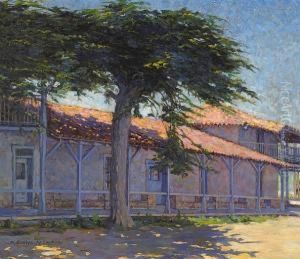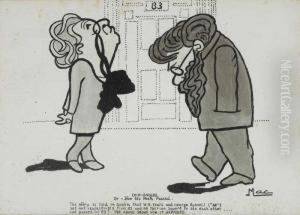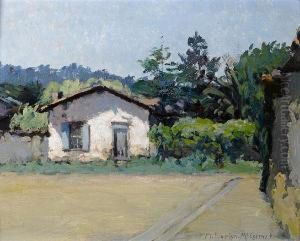Evelyn Mccormick Paintings
Evelyn McCormick was an American artist known for her impressionist landscapes and depictions of California's early 20th-century architecture and gardens. Born on August 18, 1862, in Placerville, California, she grew up during a time when the American West was undergoing significant change and development, which would later inform her artistic pursuits.
McCormick studied art at the California School of Design in San Francisco, where she was influenced by her teachers Virgil Williams and Emil Carlsen. Her education there provided her with a strong foundation in the techniques of classical painting. She further honed her skills during her travels to Paris in the late 1880s, where she absorbed the influences of French Impressionism, a movement that was at its height during this period.
After returning to California, McCormick settled in the Monterey Peninsula, which had become a vibrant artist community by the turn of the century. She was particularly drawn to the historic adobes and gardens of Monterey, as well as the scenic beauty of the surrounding area. These subjects formed the core themes of her work throughout her career. McCormick's style was characterized by loose brushwork and a bright palette, hallmarks of the impressionist style she had adopted in France.
Despite facing the challenges of being a woman artist in a male-dominated field, McCormick achieved considerable success during her lifetime. She exhibited her work at various venues, including the San Francisco Art Association, the Del Monte Art Gallery in Monterey, and the Panama-Pacific International Exposition in 1915, where she received recognition for her contribution to California Impressionism.
Evelyn McCormick's legacy is marked by her role in chronicling the transformation of California's landscape and architecture during an era of great change. She was a pioneering woman artist in the state and her work continues to be appreciated for its historical value and artistic quality. McCormick passed away on October 10, 1948, in Monterey, leaving behind a rich body of work that offers a window into California's past from an impressionist perspective.



